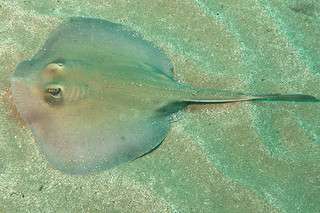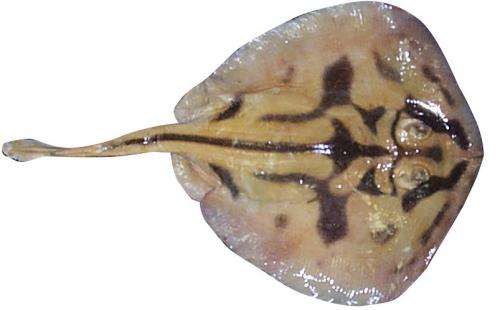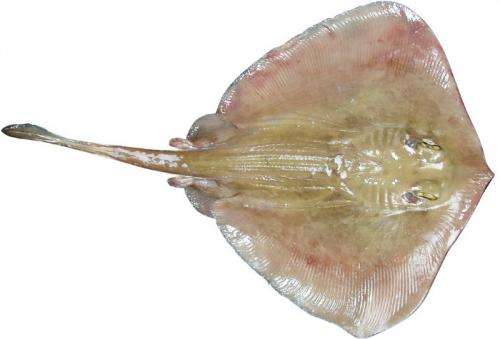Stingrays found to reproduce differently depending on geographical location

Researchers have found regional differences in the reproductive strategies of one of Australia's most abundant stingray species, the sparsely-spotted stingaree (Urolophus paucimaculatus), leading them to question whether they might in fact be separate species.
WA Fisheries researcher Dr Fabian Trinnie completed a PhD on five stingaree species for the purpose of fisheries stock assessment, ecological risk assessment, and species extinction-risk.
He examined their reproductive biology to determine the periodicity of the reproductive cycle, size-at-maturity and maternity, and litter size caught during commercial fishing in south-east Australian waters.
These were then compared to previous studies on stingaree species in WA.
"My study concludes that stingaree species in WA have developed a different reproductive strategy to the stingaree species in SE Australia," Dr Trinnie says.
Dr Trinnie also directly compared the reproductive strategy of U. paucimaculatus which were found in Crowdy Head in New South Wales and in Lancelin.
In WA, pups are born in early or mid-summer and females bear litters of one or two, a strategy of producing few but large pups.
In the south-east, however, birth occurs in spring or early summer and females bear litters of up to six, a strategy of more but smaller pups.
"Without genetic testing, it is unknown whether these differences in U. paucimaculatus are due to them having to adapt to their surrounding environments; because their habitat and environmental conditions are different or

whether they are separate species," Dr Trinnie says.
"However, there is mounting evidence to suggest that they are separate species."
Dr Trinnie says stingarees are highly susceptible to overfishing, as several south-eastern species are listed on the IUCN Red List as vulnerable to near threatened.
He says that over a 20 year period, some have had their populations reduced by up to 80 per cent.

"They are all by-catch species—caught during gill-netting, seine netting, and trawling and not kept for consumption," he says.
"When thrown back, most individuals would perish and pregnant females would most likely abort their young due to the stress."
While fishing pressure has now been reduced in the East and the species are recovering, Dr Trinnie warns if the same were to happen in WA, the stingarees would be even more susceptible to over-fishing because recruitment is lower.
"If they were overfished in WA, it would take a lot longer to get back to the natural size population," he says.
More information: "Regional differences in the reproductive parameters of the sparsely-spotted stingaree, Urolophus paucimaculatus, from south-eastern Australia." Marine and Freshwater Research 65(11) 943-958 dx.doi.org/10.1071/MF13275
Provided by Science Network WA



















